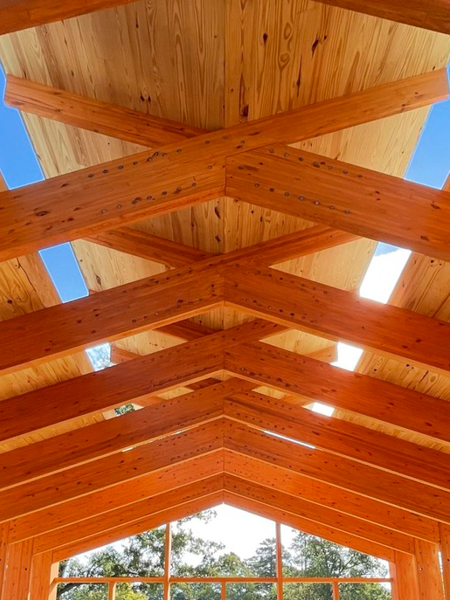Cutting Carbon: Fireproofing and Wood Structures (Series Part 4)

Wood construction comes in many forms (light-framed, engineered wood, mass timber, etc.) and is often promoted as a climate savior. But the reality of sustainable wood construction is complex and a consensus around wood’s climate performance has yet to materialize. Meanwhile, structural steel and wood are major components in high-rise buildings and often need to be protected with fireproofing, of which there are a handful of common design options. But which options are best when it comes to tracking and reducing embodied carbon?
In the fourth session of our “Cutting Carbon” webinar series, we will address the embodied carbon impacts of wood construction and share details about fireproofing structural steel and wood.
LEARNING OBJECTIVES
After attending this webinar, participants will be able to:
- Understand the fireproofing options for structural steel and wood, and the related embodied carbon impact.
- Recognize various types of wood construction and the complexities of assessing wood’s climate performance.
- Consider biogenic carbon and how life-cycle assessment (LCA) tools account for it.
- Adopt design and procurement strategies that are likely to reduce the climate impact of wood construction.
ABOUT THE SERIES
Cutting Carbon: Embodied Carbon Discussions for Sustainable Buildings
As global temperatures increase, so do discussions about reducing the environmental impact of building projects. For decades, the industry has focused on lowering operational carbon in buildings by decreasing energy usage. More recently, we now recognize the importance of reducing the embodied carbon in our projects caused by extracting, fabricating, transporting, installing, maintaining, and disposing of building materials and raw material components. Complicating matters, balancing operational and embodied carbon at the same time can lead to conflicting priorities and challenging discussions about retrofitting existing buildings versus designing new and efficient ones.
In this four-part webinar series, experts from Simpson Gumpertz & Heger will explore these topics from varying angles, including overall sustainability concerns, building enclosure system design, and structural material considerations.
Join us for the rest of the series:
- Tuesday, October 3: Embodied Carbon 101 (Part 1), presented by Julia Hogroian and Andrea Bono
- Tuesday, October 10: Facades, Glazing, and Roofing (Part 2), presented by Anna Burhoe, John Jackson, and Travis St. Louis
- Tuesday, October 17: Structural Steel and Concrete (Part 3), presented by Eric Fleet, Julia Hogroian, and Matthew Sander
Participants will earn 1.0 AIA CES Learning Unit (LU/HSW) for attending the live webinar. Registration is free. Please note that space is limited – email events@sgh.com to join our waitlist if the session is closed when you register.


